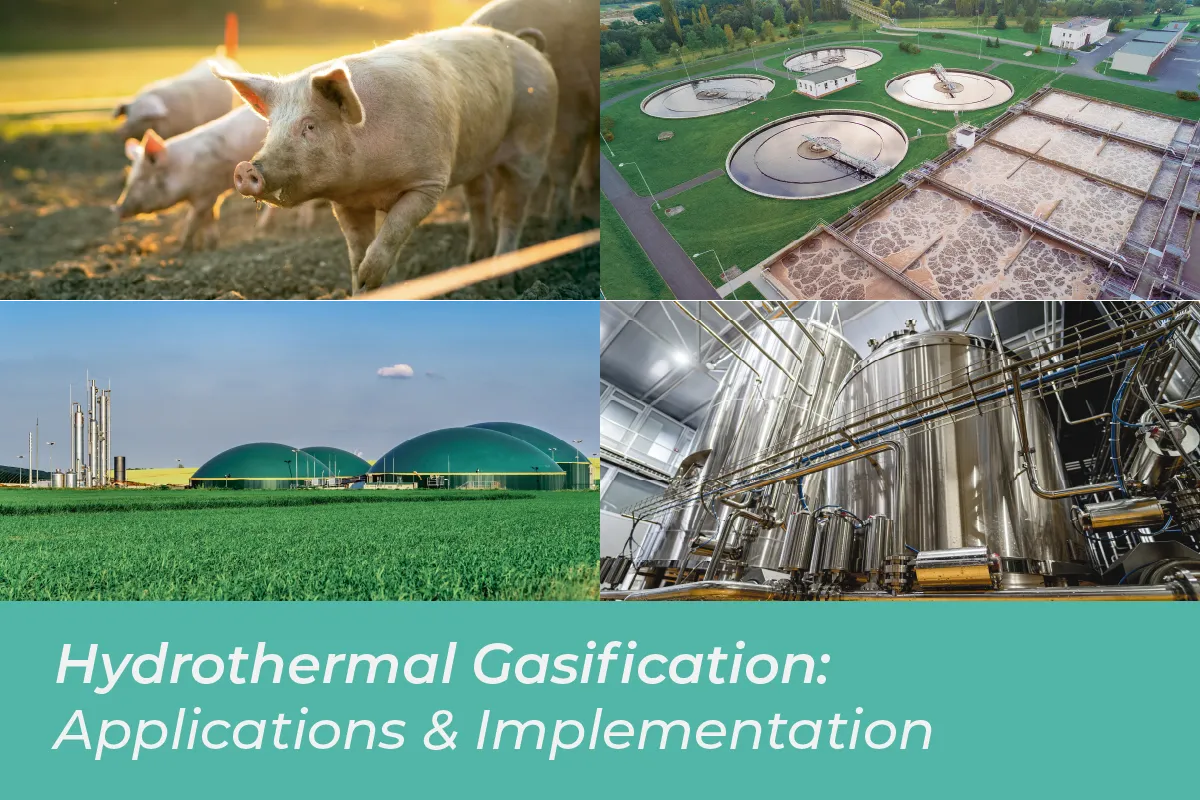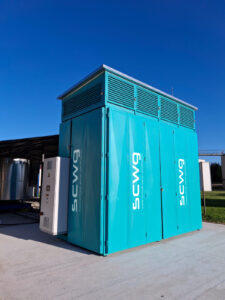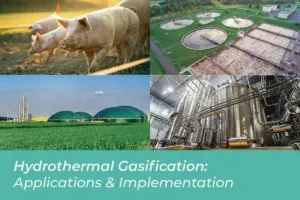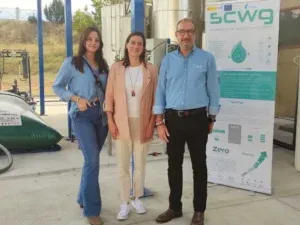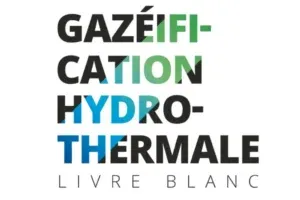Hydrothermal gasification, also known as Supercritical Water Gasification (SCWG), is a revolutionary process that is shifting the paradigm on humid waste management and its energetic recovery.
This emerging technology, which implies the gasification of humid biomasses (>80% water content) into renewable gas through a high-temperature, high-pressure process, has the potential to transform the way we produce energy and manage organic waste.
This process consists of the gasification of organic waste products in an aqueous environment under supercritical conditions (above 22.1MPa and 374ºC). These conditions allow the water to acquire special thermal and physical properties (such as density, viscosity, thermal conductivity and specific heat capacity) to transform wet biomass, or humid organic waste, into synthesis gas (CH4, H2, CO2), clean water and other inorganic compounds in the form of salts, which are water soluble under supercritical conditions.
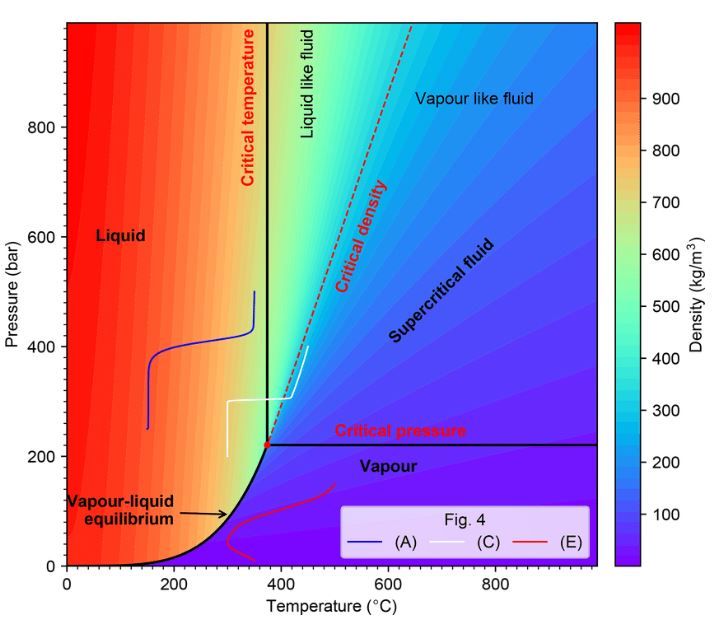
Furthermore, unlike conventional energy production methods, which typically release large amounts of carbon dioxide and other greenhouse gases into the atmosphere, Hydrothermal Gasification produces clean synthesis gas that can be used to generate energy at a minimal environmental impact. In addition, this process translates into to novel applications in the field of biofuels, hydrogen, and syngas production, providing a renewable and sustainable energy source.
One of the most outstanding aspects of Hydrothermal Gasification is its capacity to significantly reduce polluting emissions, since at a minimal carbon footprint, the residues used to feed the process are varied: from biomass and fossil waste, to contaminated organic fluids and all possible mixtures among them.
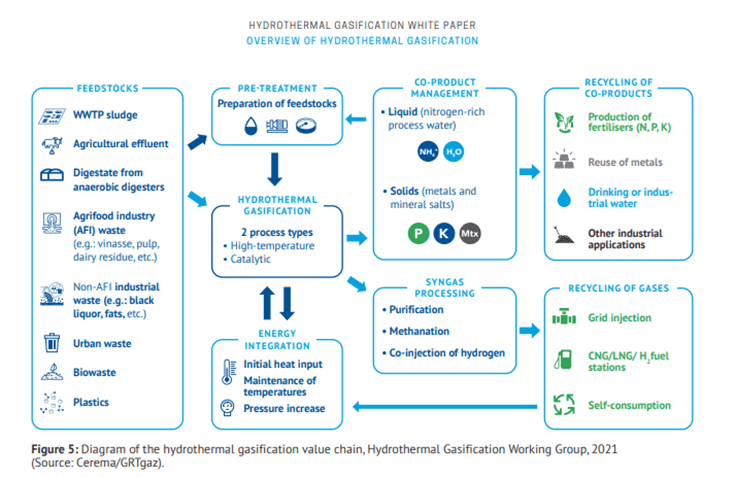
The main character that stands out of the wide range of possible applications unwrapping with the consolidation of this solution, is industrial sludge, which can be converted into synthetic natural gas to be used as a source of clean renewable energy, or used to produce biofuels, positioning this solution as an effective sustainable alternative to its fossil counterparts.
On the other hand, hydrogen, a key component of syngas, can be extracted and used in fuel cells to generate electricity.
Types of Waste Treated
One of the main advantages that Hydrothermal Gasification represents is the wide variety of waste types it is capable of processing, and the efficiency in that it does so, as there are many materials subject to treatment, among which we find residual biomass, urban or industrial sludge, and sewage sludge.
The wide range of waste categories that can be subject to treatment by Hydrothermal Gasification makes this technology a particularly attractive one for all industries, especially those intensive in alimentary, agricultural and livestock waste, and various biosolids, including their possible mixtures with fossil waste and contaminated fluids that otherwise, could not be safely recycled.
The publication “Hydrothermal Gasification White Paper” provides a comprehensive review of the progress being made in the biomass and energy recovery sector using this technique.
Published in January 2023 by the French National Working Group on Hydrothermal Gasification, its pages cover its technological maturity and latest developments, while commenting on pioneering projects and the economic potential of this energy production technique.
In the graph below, extracted from this publication, we can see illustrated the great variety of wastes prone to be processed by Hydrothermal Gasification. Those with high renewable potential and low atmospheric carbon emissions, such as urban and industrial waste, excavation waste, digestate and certain waste from food production processes, are ranked in priority order one.

In second and third order of priority are labelled other wastes that, despite being fully processable by hydrothermal gasification, the methods to make the technology readily accessible are still being developed. These wastes of animal and vegetable origin are abundant in rural areas, where its reuse as soil fertilizers is widespread.
However, the process proposes the transformation of said biowaste into energy, which represents a strong differential added value for many industries, especially considering possible increasingly restrictive regulations in the future.
The latter graph indicates a realistic scenario in which gas production could surpass 63TWh a year by Hydrothermal Gasification, as in the French case study.
While other technologies require a previous dehydration phase of materials, Hydrothermal Gasification directly feeds off humid waste, reducing the energy consumption associated with dehydration and increasing the overall efficiency of the process.
In addition, the pressurization all gases must undergo in order to be used, is inherent to the Hydrothermal Gasification process, which increases the efficiency of the operation, compared to other methods that spend additional time and resources to pressurize the gas and make it suitable for subsequent storage, transport and use.
Integration into Existing Gas Networks and Challenges
Gas resulting from the Hydrothermal Gasification process is compatible with existing gas networks, with no additional infrastructure being required for its use and distribution, which facilitates the mainstreaming of this technology and adaptability of industries to increasingly changing and demanding markets in terms of sustainability, industrial needs and regulations.
Given the possibility of integration, more opportunities arise, such as the possibility to store excess renewable energy. During periods of high energy production, excess electricity can be used to fuel Hydrothermal Gasification processes, converting organic waste into synthesis gas. Likewise, said gas can be injected into gas networks for storage and subsequent use, providing an effective way of balancing energy supply and demand curves.
There are several factors to consider when evaluating the integration of Hydrothermal Gasification systems, such as: the most appropriate ecosystems for their installation, considering the availability and type of waste; regions with well-developed gas networks, where the injection of synthesis gas could be carried seamlessly; and finally, the policy and regulatory environment specific to each geographical area and sector.
The diverse fields of use of this new technology highlights the breakthrough that Hydrothermal Gasification represents, not only for industries globally, but also for society at large. By reducing polluting emissions and unravelling new pathways of renewable energy production and smart energy management, this process has the potential to transform our relationship with energy and the environment as we now conceive it, setting a new standard.
With leap forward in this technology, an increasingly cleaner and greener future is at hand.

